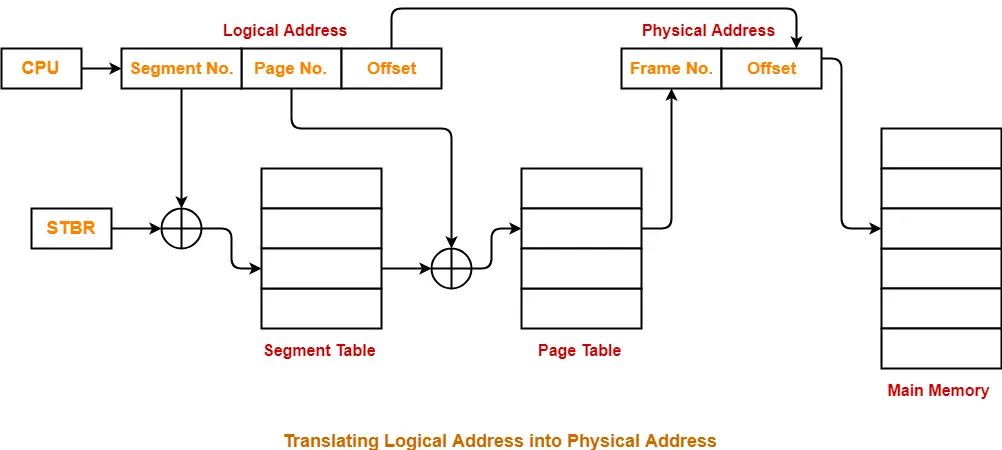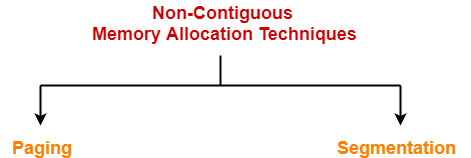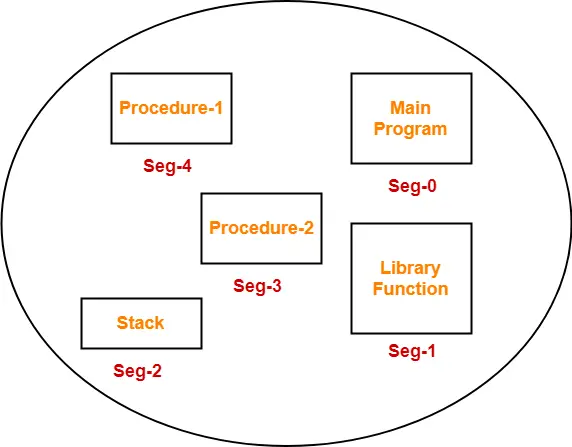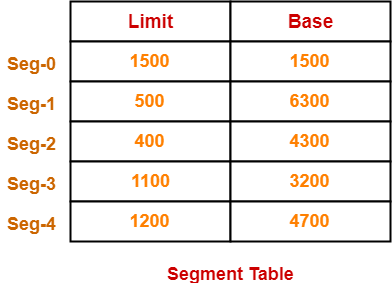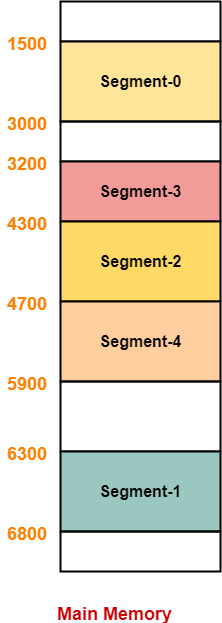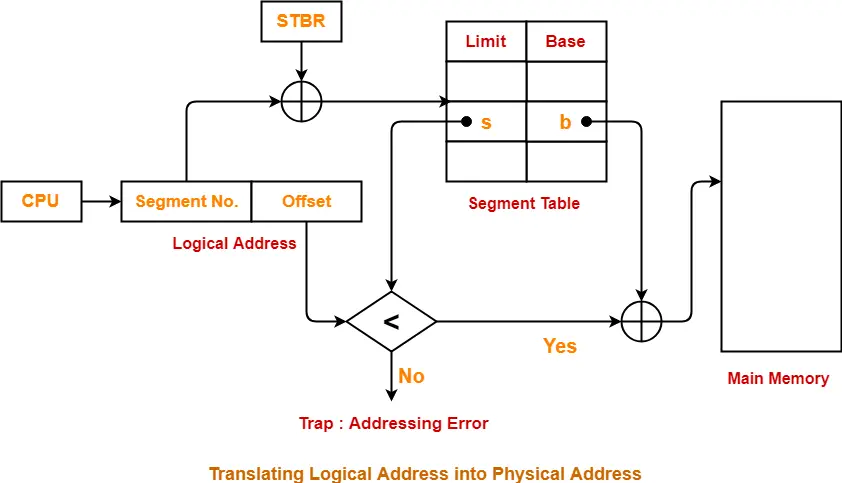Segmented Paging-
Before you go through this article, make sure that you have gone through the previous article on Segmented Paging.
We have discussed-
- Segmented Paging is a scheme that implements the combination of Segmentation and Paging.
- First, segmentation divides the process into segments.
- Then, paging divides each segment into pages.
In this article, we will discuss practice problems based on segmented paging.
PRACTICE PROBLEMS BASED ON SEGMENTED PAGING-
Problem-01:
A certain computer system has the segmented paging architecture for virtual memory. The memory is byte addressable. Both virtual and physical address spaces contain 216 bytes each. The virtual address space is divided into 8 non-overlapping equal size segments. The memory management unit (MMU) has a hardware segment table, each entry of which contains the physical address of the page table for the segment. Page tables are stored in the main memory and consists of 2 byte page table entries. What is the minimum page size in bytes so that the page table for a segment requires at most one page to store it?
Solution-
Given-
- Virtual Address Space = Process size = 216 bytes
- Physical Address Space = Main Memory size = 216 bytes
- Process is divided into 8 equal size segments
- Page table entry size = 2 bytes
Let page size = n bytes.
Now, since page table has to be stored into a single page, so we must have-
Size of page table <= Page size
Size of Each Segment-
Size of each segment
= Process size / Number of segments
= 216 bytes / 8
= 216 bytes / 23
= 213 bytes
= 8 KB
Number of Pages Of Each Segment-
Number of pages each segment is divided
= Size of segment / Page size
= 8 KB / n bytes
= (8K / n) pages
Size of Each Page Table-
Size of each page table
= Number of entries in page table x Page table entry size
= Number of pages the segment is divided x 2 bytes
= (8K / n) x 2 bytes
= (16K / n) bytes
Page Size-
Substituting values in the above condition, we get-
(16K / n) bytes <= n bytes
(16K / n) <= n
n2 >= 16K
n2 >= 214
n >= 27
Thus, minimum page size possible = 27 bytes = 128 bytes.
Problem-02:
Considering problem-01, give the division of virtual address.
Solution-
Number of Bits Required For Segment Number-
Number of segments the process is divided
= 8
= 23
Thus, Number of bits required to identify a particular segment in segment table = 3 bits.
Number of Bits Required For Page Number-
Number of pages a segment is divided
= Segment size / Page size
= 8KB / 128 bytes
= 213 bytes / 27 bytes
= 26 pages
Thus, Number of bits required to identify a particular page in table = 6 bits.
Number of Bits Required For Page Offset-
Page size
= 128 bytes
= 27 bytes
Thus, Number of bits required for page offset = 7 bits.
Thus, virtual address is divided as-
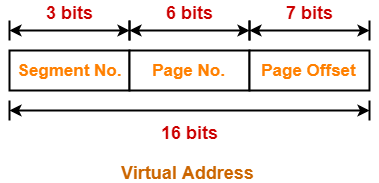
Problem-03:
A certain computer system has the segmented paging architecture for virtual memory. The memory is byte addressable. Both virtual and physical address spaces contain 216 bytes each. The virtual address space is divided into 8 non-overlapping equal size segments. The memory management unit (MMU) has a hardware segment table, each entry of which contains the physical address of the page table for the segment. Page tables are stored in the main memory and consists of 2 byte page table entries.. Assume that each page table entry contains (besides other information) 1 valid bit, 3 bits for page protection and 1 dirty bit. How many bits are available in page table entry for storing the aging information for the page? Assume that page size is 512 bytes.
Solution-
Given-
- Virtual Address Space = Process size = 216 bytes
- Physical Address Space = Main Memory size = 216 bytes
- Process is divided into 8 equal size segments
- Page table entry size = 2 bytes = 16 bits
- Page table entry besides other information contains 1 valid bit, 3 protection bits, 1 dirty bit
- Page size = 512 bytes
Number of Frames in Main Memory-
Number of frames in main memory
= Size of main memory / Page size
= 216 bytes / 512 bytes
= 216 bytes / 29 bytes
= 27 frames
Thus, Number of bits required for frame identification in page table entry = 7 bits
Number Of Bits Available For Storing Aging Information-
Number of bits available for storing aging information
= Number of bits in page table entry – ( Number of bits required for frame identification + 1 valid bit + 3 protection bits + 1 dirty bit)
= 16 bits – (7 + 1 + 3 + 1) bits
= 16 bits – 12 bits
= 4 bits
Next Article- Disk Scheduling Algorithms
Get more notes and other study material of Operating System.
Watch video lectures by visiting our YouTube channel LearnVidFun.


